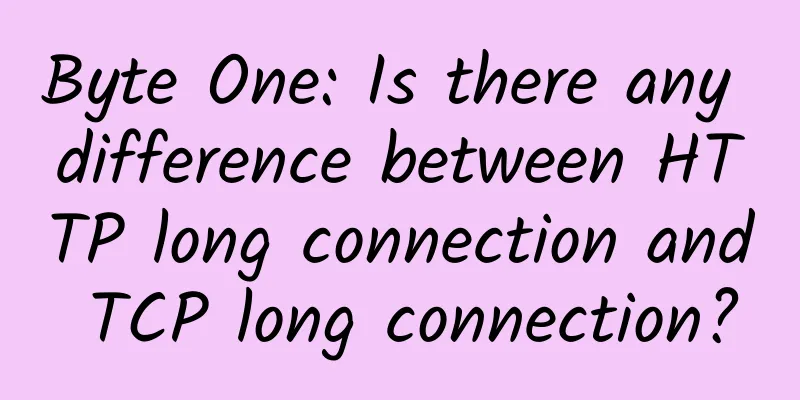Learn Network TCP/IP Protocol Stack

|
This article is reprinted from the WeChat public account "Xiaocai Learns Programming", written by fasionchan. Please contact Xiaocai Learns Programming public account for reprinting this article. In the previous section, we learned about the OSI reference model and saw the important role of layered design in communication systems. So, are the current communication protocols layered according to the OSI model? What are the important protocols at each layer? The most widely used communication protocol is the TCP/IP series of protocols, but it is not strictly designed according to the OSI reference model. In fact, TCP/IP was developed long before the OSI reference model was proposed, and has been gradually developed to this day. The TCP/IP protocol stack is also designed in layers, but unlike OSI, it is divided into only 4 layers: Network Access LayerThe network access layer is responsible for managing the physical medium and providing the ability to transfer data from the current node to the next node. Therefore, the function of the network access layer is equivalent to the physical layer and data link layer in OSI. Different communication media have different access devices and use different protocols. The common ones are:
Taking the Ethernet card as an example, its communication medium is cable, the communication protocol is the Ethernet protocol, and the protocol transmission unit is the Ethernet frame. The network card circuit directly processes electrical signals and completes the conversion between electrical signals and bits. This is equivalent to the function of the OSI physical layer, but the network card does not directly present the physical layer function to the upper layer. In fact, the network card also implements the network addressing and error detection functions in the data link layer, providing the upper layer with the ability to send and receive Ethernet frames. The system can call the network card driver to send Ethernet frames; after the network card receives the Ethernet frame, it also submits it to the system for processing through the driver. In summary, the network access layer uses frames as the communication unit and is responsible for sending data to another node in the same network (LAN).
Network interconnection layerThe Internet layer implements Internet communication capabilities on top of the LAN communication capabilities provided by the network access layer. This layer is equivalent to the network layer in the OSI model, and also uses packets as communication units, and is responsible for path selection and packet forwarding. The IP protocol in the TCP/IP protocol stack is the core protocol of this layer. It uses IP packets as the communication unit. Hosts that use the IP protocol for communication need to be assigned an address, which is the IP address. The source address and destination address fields in the IP packet header are used to mark the source and destination of the IP packet. The network interconnection layer uses the LAN communication capabilities of the network access layer to transmit the IP packet to the next node. After several forwardings, the IP packet is finally delivered to the target host. We will reveal more details in the following chapters.
Transport LayerThe transport layer implements end-to-end inter-process communication based on the point-to-point transmission capability of the network interconnection layer. This layer is equivalent to the transport layer in the OSI model. It also uses the segment as the communication unit and is responsible for sending data to the target process according to the port number in the segment. The simplest transport layer protocol should be the UDP protocol, which is very simple and only introduces a port number. When a UDP segment is carried in an IP packet and sent to the target host, the system will send the data to the corresponding process according to the port in the segment. IP is only a best-effort transmission protocol and is not completely reliable: on the one hand, IP packets may go through different routes during transmission and may be out of order when reaching the destination host; on the other hand, intermediate routes may cause packet loss due to network congestion. In order to ensure the reliability of data transmission, the transport layer also provides the TCP protocol. In addition to the port number, the TCP protocol also implements the data sequence number, reception confirmation, and timeout retransmission mechanism, thereby providing a reliable and orderly data flow for the process. TCP is the core protocol of the transport layer and has a wide range of applications, so it is the focus of network learning. The implementation of TCP is very complex and the details will be introduced in subsequent chapters. Now you can have a preliminary understanding of it.
Application LayerThe application layer defines the communication logic of specific network applications, making collaboration between application processes possible. The transport layer provides generalized data transmission capabilities for processes, but does not make any provisions for the data itself. Therefore, to implement multiple collaborative processes of an application, a protocol is needed to reach a unified understanding of the data. Taking Web applications as an example, the browser process, as a client, must initiate a request to the Web service process in accordance with the provisions of the HTTP protocol in order to be understood by the server; similarly, after the Web server processes the request, it must reply to the client in accordance with the provisions of the HTTP protocol. HTTP is the common language for Web applications to communicate with each other. As network applications are extremely rich, there are many types of application protocols. The most common ones are as follows:
summaryThis section introduces the most popular TCP/IP protocol stack, which also adopts a layered design concept, which is slightly different from the OSI layering, but similar. The correspondence between the TCP/IP model and the OSI model, as well as the main protocols of each layer, are listed below: We will use this diagram as a guide to study in depth from bottom to top. Stay tuned! |
>>: Microsoft discontinues SQL Server on Windows Containers Beta project
Recommend
It will take time for 5G cross-network roaming to become popular
On May 17, at the opening ceremony of the "2...
HostHatch: 1TB VPS with a large hard drive starting at $35 per year, in data centers in Hong Kong, Singapore, Japan, etc.
HostHatch updated the latest information on LET t...
[Black Friday] Sharktech: 50% off on all cloud products, 10Gbps unlimited traffic server $349/month-2*Gold 6148/128G/2TB NVMe/Los Angeles and other data centers
Sharktech also released a promotion during this y...
Transitioning from IPv4 to IPv6, you can't miss these knowledge points
[[277315]] Understanding the network model The ne...
Mobile Data and Broadband Outlook 2017: Consumers Expect More Inclusive Data Plans
According to foreign media reports, as an industr...
Technical Life Part 5-A brief discussion on how to become the number one technician?
Preface Most people have their own fixed thinking...
In 2017, the cybersecurity industry says no to black production!
[51CTO.com original article] In Keigo Higashino&#...
[6.18] Megalayer flash sale: Hong Kong independent server starts from 199 yuan/month, high-defense server starts from 299 yuan/month
At the beginning of the month, we shared Megalaye...
Crazy 5G connectors, the next wave
5G is developing at an amazing speed The Ministry...
If the TCP protocol is used, will there be no packet loss?
Data packet sending process First, the green chat...
HostKvm April Promotion: 20% off on all VPS hosts, starting from $5.2/month in Hong Kong/Los Angeles data centers
HostKvm is a foreign hosting service provider fou...
Morphling: How to maximize cost reduction when deploying AI in cloud native?
With the vigorous development of cloud-native tec...
Hostodo October Promotion: $45/year KVM-3GB/30G NVMe/5TB/three computer rooms
Hostodo has launched the Spooky October Sale, off...
5 things you should know about monitoring tools
Does your IT team have too much data and not enou...
Top 10 acquisitions that changed the Internet industry in 2016
【51CTO.com Quick Translation】 In the Internet ind...









